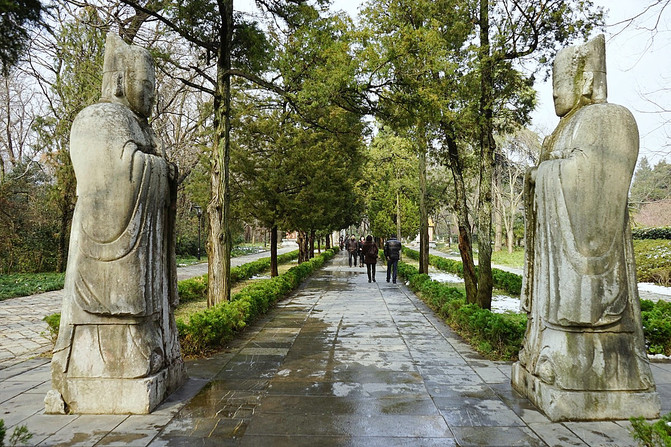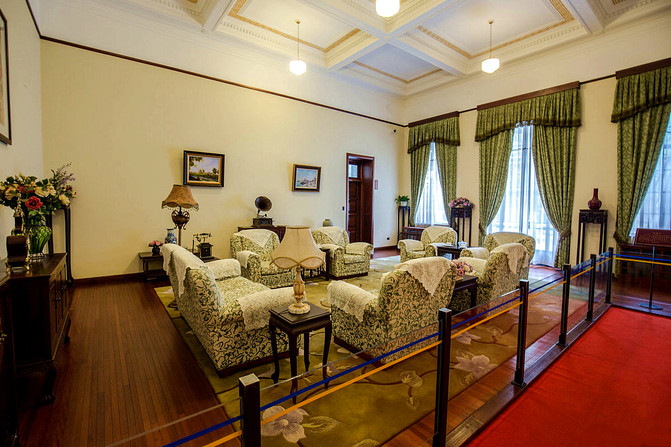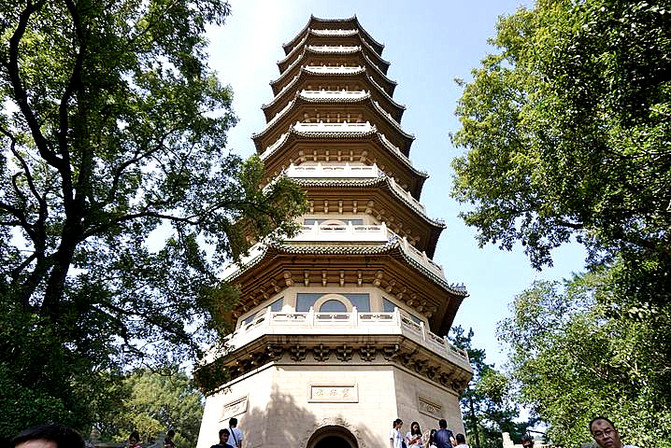Hundreds of beauties in Jinling over the past millennium gather in the scenic scenery of Zhongshan
To say that in the memories of old Nanjing people, the place with the most "Nanjing flavor" is not the current hot Confucius Temple or the beautiful Xuanwu Lake, but this undulating "Purple Mountain"-Zhongshan Mountain. Mountains, water, cities and forests are integrated into one, embodying the cultures of the Six Dynasties, Ming Dynasty, Republic of China, Buddhism and other cultures in one mountain. The historic sites and beautiful scenery of Zhongshan can be said to embody the essence of Nanjing, a thousand-year-old capital.

Zhongshan Scenic Area is a famous scenic resort in China and the top 40 tourist attractions in China. Zhongshan Mountain is located in the northeastern suburbs of Nanjing. It has been known as the four famous mountains in the south of the Yangtze River since ancient times. Because the top of the mountain is often surrounded by purple clouds, it is also named Zijin Mountain. Known as Zhongshan Longpan, it is a gathering place of scenic spots and historic sites in Nanjing. It is also a national ecological and cultural demonstration site and a world cultural heritage site.

Ming Xiaoling Mausoleum:
Ming Xiaoling Mausoleum is the joint burial tomb of Zhu Yuanzhang, the founding emperor of the Ming Dynasty, and his queen Ma. Because the queen's posthumous title "Xiao Ci", it was named Xiaoling. The overall layout of the cemetery is magnificent and highly skilled. In particular, the Shinto of the Ming Xiaoling Mausoleum is 2400 meters long and has deep twists and turns. To visit the Ming Xiaoling Mausoleum, you usually enter from the south. After passing through the S-shaped Shinto, you will continue north until you reach Baoding.

Shixiang Road is an integral part of the Ming Xiaoling Mausoleum. In the first half, 12 pairs of 6 species of stone beasts stood on both sides, including lions, camels, elephants, unicorns, etc. The stone statue is tall, vivid, rough, and full of majesty. These stone statues not only mark the sublime, holiness and beauty of the imperial mausoleum, but also play a symbolic role in defense, evil spirits and etiquette.

Weng Zhong Road is located at the end of Shixiang Road. On both sides of the road, Weng Zhong stands standing tall by pines and cypresses, hence the name "Weng Zhong". Weng Zhong has eight statues, divided into four groups, standing opposite each other, 4 meters tall, and a burly body. Two pairs of generals wearing armor and holding gold shields. The other two pairs were civil officials wearing court crowns and holding court hats.

Wenwu Square Gate is the main entrance of Xiaoling. It has 5 door openings, 3 large and 2 small. The 3 in the middle are arched door openings and the 2 on both sides are rectangular door openings. A rectangular door forehead is hung above the main entrance, and four gilded characters "Civil and Martial Square Gate" are written vertically. The vermilion city gates and walls show their classical beauty.

Sifang City, located in the Ming Xiaoling Mausoleum, is also known as the "Shenggong Shengde Monument Building". It was built in 1413 AD. The building plan is square and the roof has been destroyed. It is commonly known as Sifang City. There is a large stone beast in the city, with its head raised and its tail trailing. It looks like a living creature. On its back is a stele carrying the divine skills and virtues of the Ming Xiaoling Mausoleum. The inscription is in regular script and is 2746 words long. The words are as big as a fist, describing the merits of Emperor Taizu of the Ming Dynasty during his life.

Meiling Palace:
Meiling Palace, formerly known as the "Official Residence of the Chairman of the National Government" and the "Official Residence of Chairman Xiaohongshan", is located on Xiaohong Mountain at the southern foot of Zhongshan Mountain in Nanjing. It was built as a villa for Chiang Kai-shek and Song Meiling. The official residence covers an area of more than 20 acres, and the main building has a construction area of more than 2000 square meters. It is one of the favorite residences of Jiang Song and his wife.

The main building is a three-story mountain palace with double eaves, covered with green glazed tiles. The exterior is magnificent and the interior is luxurious. It is surrounded by trees and fragrant with flowers all year round.

The interior furnishings are now arranged as they are. On the east side is the bedroom of Chiang Kai-shek and Soong Meiling, and on the ground floor there is a Meiling Exhibition. There is the "First Lady Cafe" on the second floor. After learning about history, you can sit here and experience the past.


Linggu Temple:
Linggu Temple is located on the southeast slope of Zijin Mountain in the eastern suburbs of Nanjing City, about 1.5 kilometers east of Sun Yat-sen Mausoleum. Linggu Temple was originally named Kaishan Temple. It was built by Emperor Wu of the Liang Dynasty in the Southern Dynasties to commemorate the famous monk Zen Master Baozhi. Zhu Yuanzhang, the founder of the Ming Dynasty, personally named "Linggu Zen Temple."

Linggu Temple Wuliang Hall is located in Linggu Park at the southern foot of Zijin Mountain in Nanjing. It is the oldest and largest brick arch-structure temple in my country. It was built in the 14th year of Hongwu (1381). It was originally the Wuliang Hall in Linggu Temple, which dedicated the Wuliang Buddha. Because the entire building adopts a brick arch structure and does not have wooden beams, it is also called the "Wuliang Hall".

Linggu Tower is the tallest and most beautiful eight-sided nine-story pagoda in Nanjing. It is built of reinforced concrete and Suzhou Jinshan granite. Linggu Tower, formerly known as the War Memorial Tower, was built in 1931 and is an important organizational part of the War Memorial Complex.

Music station:
The music station was jointly funded by overseas Chinese in San Francisco and the Kuomintang Party Headquarters in Liaoning Province. It was completed in 1933. The fan-shaped plane shape is rare in China. The stage is built at the center of the fan surface. The large wall behind the stage has a sound collection function. The semicircular lawn in front of the stage can accommodate 3000 spectators. It is a natural place to hold open-air concerts.

Previous Article:Everyone loves Jiangnan Style Hotels in my heart!
Next Article:The rhyme of water and the blooming of phoenix flowers is the time to pursue dreams
